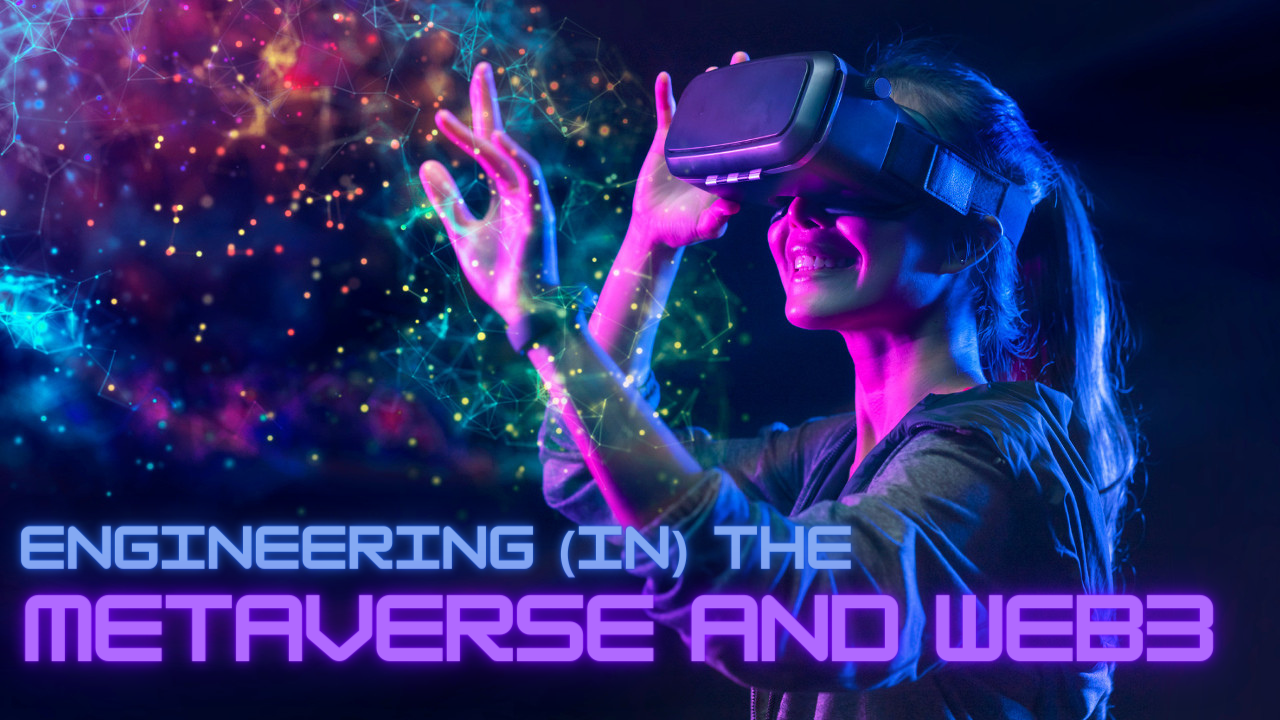
5 minute read
ENGINEERING (IN) THE METAVERSE: BEYOND THE HYPE?
ALUMNI NEWS
The new internet is coming. What until very recently was dismissed as a hype is gaining considerable momentum in business, industry, and everyday life. But what exactly is the metaverse? And how will it increase the efficiency of design, manufacturing, maintenance, marketing, and sales?
On 25 October 2023, Alumni Engineers KU Leuven and EY Belgium organised a theme night on this subject at Group T Campus in Leuven.
Ever since sci-fi author Neil Stephenson named an alternate digital reality ‘metaverse’ in his 1992 novel ‘Snow Crash’, the word has taken on a life of its own. It became hype when, in 2021, Facebook changed its name to ‘Meta’ and CEO Mark Zuckerberg predicted that 1 billion more people would move into the metaverse this decade and hundreds of millions of dollars would be generated in digital commerce.
Meanwhile, excitement has given way to sobriety and the possibilities can be assessed more realistically. In his keynote, computer scientist and science communicator Jeroen Baert looked at the metaverse in the light of the digital transition. “Our world is becoming more digital; our customers are becoming more digital, and everything is increasingly taking place online. The metaverse is the merging of VR and AR technologies and online environments in a future phase of the internet. Users can make new contacts there with their digital doppelganger but also work, meet, build, play games, shop and even do business.”
Virtual 3D
Jeroen was formal: ‘There is no such thing as THE metaverse. In practice, there is a now incalculable number of virtual 3D spaces in which the most diverse user groups are active. However diverse the metaverses may be, they have some characteristics in common. These allow us to give a form of definition. I characterise a metaverse as an autonomous, persistent virtual 3D world to which we can make sensory connection to let our avatar (that is the digital doppelganger) communicate and create with other sources. In essence, it is about interaction, or -even better- new forms of collaboration. In a business environment, these can lead to significant increases in productivity and reductions in costs.”
According to Jeroen, the future of the metaverse is inextricably linked to technological advances. “Currently, the hardware to be active in the metaverse -think of VR glasses- is just good enough but not yet optimal. Many people still get nauseous when they put on such glasses. When really good products will come to the market soon, the metaverse will really break through.”
Digital twins
The combination of the real and virtual worlds is perhaps most advanced in the so-called Industrial Metaverse. Bart Demaegdt, Digitalization Technology Manager at Siemens Belgium, spoke about that. As a world leader in industrial automation, the company is also a pioneer in the use of digital twins in virtual 3D spaces. “Digital twins are at the heart of the Industrial Metaverse,” explained Bart. “As virtual representations of physical objects in the real world, they can greatly facilitate the planning and layout of factories, buildings and even entire city districts. By connecting the digital twins to their real-world equivalents and by leveraging their data, we can improve all operations of the entire life cycle.”
For companies, a new world opens, literally and figuratively. The Industrial Metaverse is an ideal tool to help operators perform their tasks better. To assist company managers in their entry into the metaverse, Siemens developed the digital business platform Xcelerator. “Its solu- tions are easy to integrate and work together seamlessly,” Bart told us. “It can be adopted very precisely to specific industrial needs. Your digital transformation can start with one machine or an entire factory.”
Convergence
Wim Hoogedeure, Global Client Service Partner at EY Belgium, and outside-thebox thinker specialising in AI solutions and capabilities, looked ahead to the future in his keynote. He outlined how the convergence of GenAI, metaverse and Web3 will shape the internet of tomorrow. “Investing USD 1.4 billion, we have engineered EY.ai, a secure capability akin to ChatGPT, to offer our clients faster and superior services. With EY.ai, we build confidence in both the data and the results, fostering exponential value and unlocking the full potential of welfare,” said Wim.
The keynotes were followed by a debate with Lawrence Landeloos, Web3 entrepreneur and founder of OneGrid, Evarist Schoofs, co-founder of One BonsaiMetaverse Solutions and Martin Meganck, professor of Ethics in Business and Engineering at KU Leuven. The discussion included the use of metaverse and immersive technologies for training purposes, the opportunities for content creators to empower brands and rewarding fan experiences. Of course, the risks were also discussed. “You build a playground in the metaverse, so to speak, that everyone can enter, including un- wanted visitors,” Professor Meganck noted. “A killer app does not exist as yet.”
The biggest issue remains the protection of your data and privacy. Care should be taken when moving into the metaverse or creating your own. Jeroen summed it up as follows: “Take a balanced approach. Instead of diving headfirst into the metaverse, conduct thorough risks assessments to understand the potential pitfalls. Start with smaller pilot programmes to gauge effectiveness and return on investment. The first internet was not created in a day. Its successor will be much more of a never-ending story.”
Yves Persoons











